Marking of Siemens washing machines
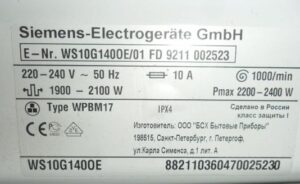 The designations of Siemens automatic machines contain information about the equipment. If you understand the decoding of the markings, you can find out a lot of information about the machine: type of washing machine, series, model, country for which the equipment was produced, etc. Let’s figure out how to correctly interpret the inscription.
The designations of Siemens automatic machines contain information about the equipment. If you understand the decoding of the markings, you can find out a lot of information about the machine: type of washing machine, series, model, country for which the equipment was produced, etc. Let’s figure out how to correctly interpret the inscription.
Understanding model codes
Siemens washing machines have long won the trust of customers. Equipment produced under the German brand is known for its high quality, reliability and versatility.
In fact, the Siemens model range is limited; there are not many washing equipment available. Each series has several models that differ from each other in technical characteristics. Let us briefly tell you what is characteristic of each series of Siemens washing machines.
- "Avantgarde". Washing machines in this series are distinguished by a new modern design. The machines are equipped with a large and convenient touch screen.
- iQ800 These machines are characterized by the i-Dos dosing system. The equipment is equipped with an iQDrive inverter engine, there is a touch screen that makes operating the washing machine more convenient;
- iQ700 A distinctive feature of the machines in this series is the built-in Wi-Fi and Home Connect control system. The machines are equipped with a touch screen and an i-Dos detergent dispenser;
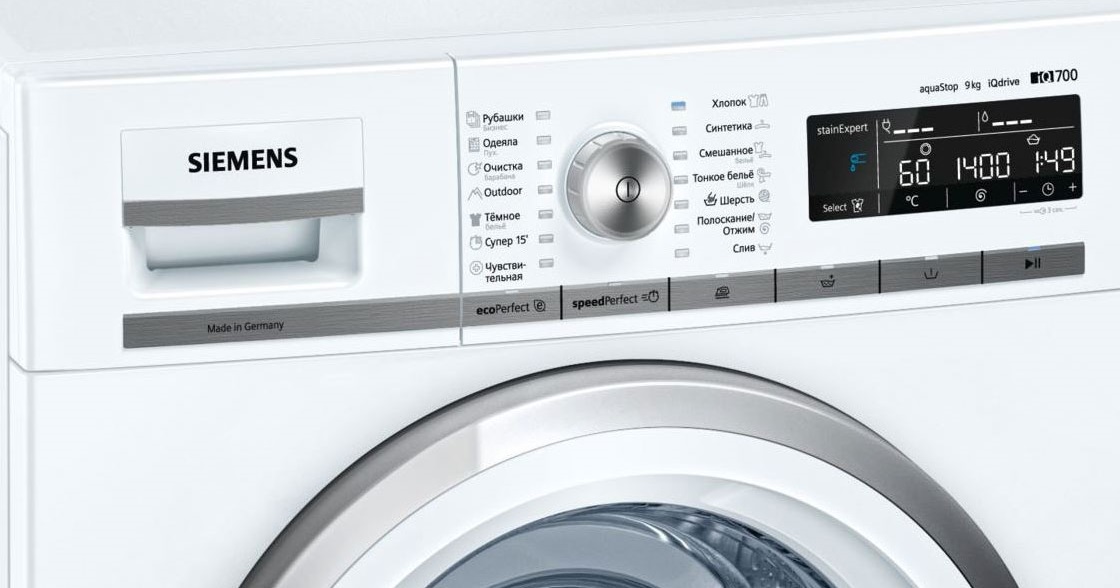
- iQ500 Automatic washing machines in this series are equipped with high-tech iQDrive inverter motors;
- iQ300 The machines are equipped with a conventional engine, only some have an iQDrive inverter. The maximum drum rotation speed during spinning has been reduced.
In order to correctly decipher the markings, it is important to know that the manufacturer uses two types of designations.
The difference will be that in the first case, the marking contains symbols that reveal the series of Siemens washing machines, and in the second, they tell about the technical features of the model (type of control and modification). Let's figure out how to decipher the designation.
First type marking
Having examined the “nameplate” of a Siemens washing machine, in addition to the power, serial number and other things, you can find an “encrypted” inscription on it in the form of a set of incomprehensible letters and numbers. This is the marking of the machine. For example, on the information sheet you can find the inscription WS12T440OE. Let's figure out what each symbol means: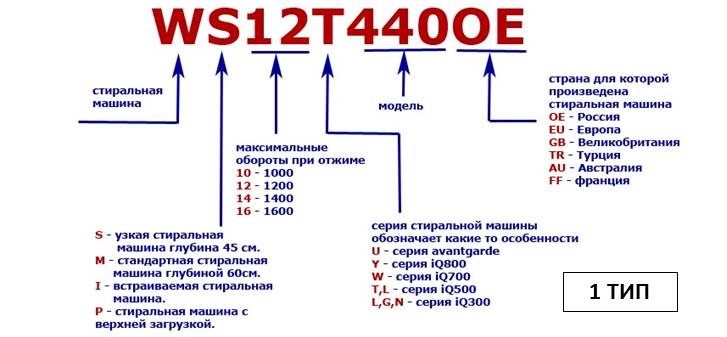
- the first letter is always the same - W. Explains that this is a washing machine;
- the second symbol tells about the type of washing machine: S – narrow machine, M – standard “front-facing”, 60 cm deep, I – built-in machine, P – “vertical”;
- the next pair of numbers indicates the maximum spin speed: 10 – 1000 revolutions, 12, 14 and 16 – 1200, 1400, 1600 revolutions, respectively;
- the fifth letter represents the SMA series. U – “Avantgarde”; Y – iQ800; W – iQ700; T or L – iQ500; L, G or N – iQ300;
- the next three digits are the model of the Siemens washing machine;
- the last two letters are the country for whose domestic market the equipment was produced. So, OE is Russia, EU is Europe, GB is Great Britain, TR is Turkey, AU is Australia, FF is France and ES is Spain.
Deciphering the markings from the example will tell you that this is a narrow Siemens iQ500 series washing machine with a maximum spin speed of 1200 revolutions. Model 440 was released specifically for the Russian market.
Second type marking
Some Siemens washing machines have slightly different “codes”. Although the difference will be small. Among the differences between the second type of markings: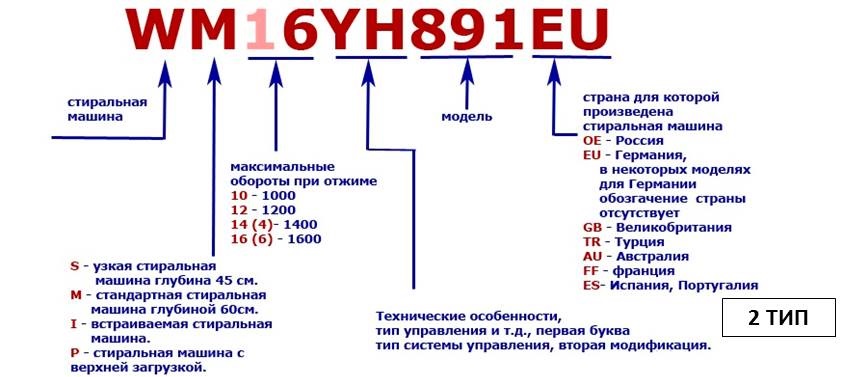
- the maximum spin speed can be indicated by one or two numbers: 10 – 1000, 12 – 1200, 14(4) – 1400, 16(6) – 1600;
- after the number of revolutions there are letters that tell not about the SMA series, but about the technical features: the type of control and modification of the machine.
A clear example of the second type of marking: WM16YH891EU. This is a standard 1600 rpm front washer, model 891. Manufactured for the European market.
Interesting:
1 reader comment

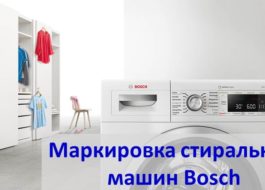
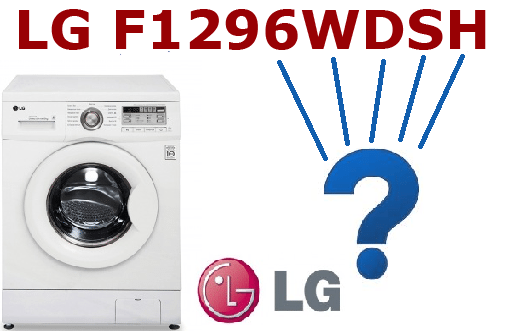
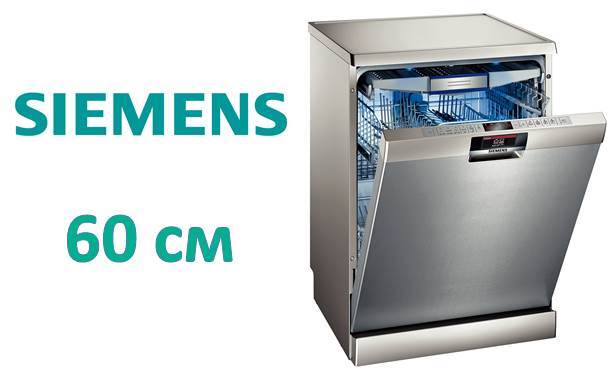
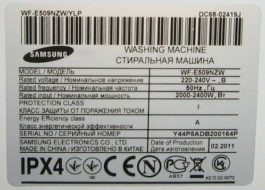
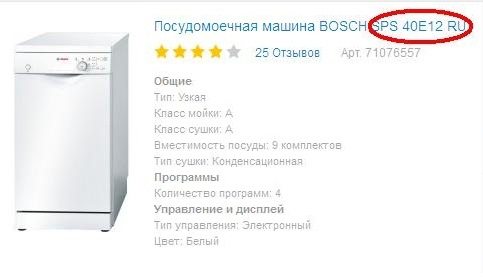
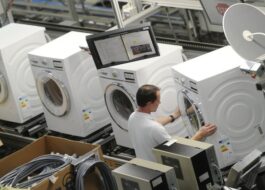














Thank you, you were very helpful.